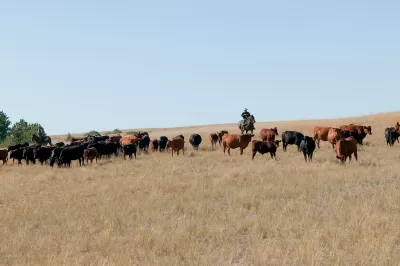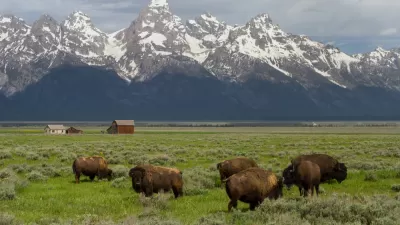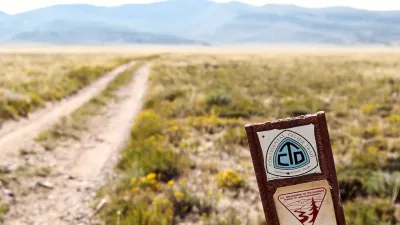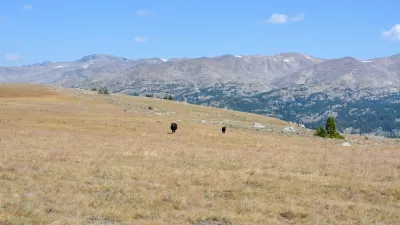Grazing lands under the agency’s management are not meeting its own criteria for ecosystem conservation and sustainable use.

An analysis from the Public Employees for Environmental Responsibility (PEER) reveals that the Bureau of Land Management (BLM) is failing to meet agency standards in caring for the 56.7 million acres of rangeland under its purvey, writes Jimmy Tobias in High Country News. “Particularly hard-hit are the high, cold deserts of Nevada, Wyoming and southern Idaho; In Nevada alone, approximately 22 million acres of public grazing land do not meet health standards.”
The report found that the BLM did not conduct health assessments on 24 percent of its grazing lands between 1997 and 2023, and half of those that were evaluated failed to meet standards for water quality, watershed protection, and conservation. “It’s not just overgrazing; invasive weeds, wildfires, off-road vehicle use, drought and more all contribute to the deteriorating health of the public domain,” Tobias explains. Bureaucracy, too, plays a part: “Thanks to a loophole embedded in the Federal Land Policy and Management Act, the agency isn’t required to complete environmental reviews before reissuing grazing permits to ranchers.”
Historically, the BLM has bowed to pressure from ranching interests, doing little to combat illegal grazing and other destructive practices. A new rule issued by the Biden administration last month expands the land health evaluation program to include “all surface acreage under the agency’s purview.”
FULL STORY: Federal grazing lands fail their checkup

Maui's Vacation Rental Debate Turns Ugly
Verbal attacks, misinformation campaigns and fistfights plague a high-stakes debate to convert thousands of vacation rentals into long-term housing.

Planetizen Federal Action Tracker
A weekly monitor of how Trump’s orders and actions are impacting planners and planning in America.

Chicago’s Ghost Rails
Just beneath the surface of the modern city lie the remnants of its expansive early 20th-century streetcar system.

Bend, Oregon Zoning Reforms Prioritize Small-Scale Housing
The city altered its zoning code to allow multi-family housing and eliminated parking mandates citywide.

Amtrak Cutting Jobs, Funding to High-Speed Rail
The agency plans to cut 10 percent of its workforce and has confirmed it will not fund new high-speed rail projects.

LA Denies Basic Services to Unhoused Residents
The city has repeatedly failed to respond to requests for trash pickup at encampment sites, and eliminated a program that provided mobile showers and toilets.
Urban Design for Planners 1: Software Tools
This six-course series explores essential urban design concepts using open source software and equips planners with the tools they need to participate fully in the urban design process.
Planning for Universal Design
Learn the tools for implementing Universal Design in planning regulations.
planning NEXT
Appalachian Highlands Housing Partners
Mpact (founded as Rail~Volution)
City of Camden Redevelopment Agency
City of Astoria
City of Portland
City of Laramie





























